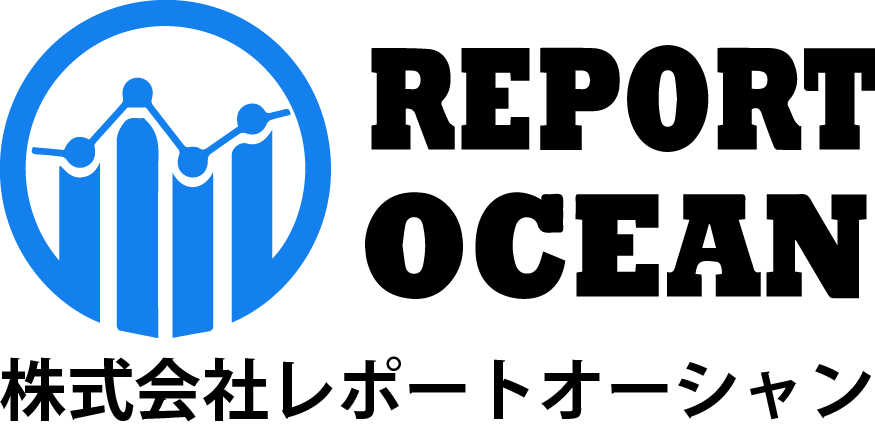日本創傷ケア市場規模、シェア、競争環境、動向分析レポート:製品別(先進創傷被覆材、外科的創傷ケア、伝統的創傷ケア、創傷治療機器)、用途別(慢性創傷、急性創傷)、購入形態別(処方、非処方)、流通チャネル別(施設販売、小売販売)、エンドユーザー別(病院、外来患者施設、在宅ケア、研究及び製造): 2024 年から 2032 年までの機会分析と業界予測
レポートID : ROJP0524077 |
最終更新 : 2024年05月 |
フォーマット : ![]() :
: ![]() :
: ![]()
1 Preface
2 Scope and Methodology
2.1 Objectives of the Study
2.2 Stakeholders
2.3 Data Sources
2.3.1 Primary Sources
2.3.2 Secondary Sources
2.4 Market Estimation
2.4.1 Bottom-Up Approach
2.4.2 Top-Down Approach
2.5 Forecasting Methodology
3 Executive Summary
4 Japan Wound Care Market - Introduction
4.1 Overview
4.2 Market Dynamics
4.3 Industry Trends
4.4 Competitive Intelligence
5 Japan Wound Care Market Landscape
5.1 Historical and Current Market Trends (2018-2023)
5.2 Market Forecast (2024-2032)
6 Japan Wound Care Market - Breakup by Product Type
6.1 Advance Wound Care Products
6.1.1 Overview
6.1.2 Historical and Current Market Trends (2018-2023)
6.1.3 Market Segmentation
6.1.3.1 Foam Dressing
6.1.3.2 Hydrocolloid Dressing
6.1.3.3 Film Dressing
6.1.3.4 Alginate Dressing
6.1.3.5 Hydrogel Dressing
6.1.3.6 Collagen Dressing
6.1.3.7 Others
6.1.4 Market Forecast (2024-2032)
6.2 Surgical Wound Care Products
6.2.1 Overview
6.2.2 Historical and Current Market Trends (2018-2023)
6.2.3 Market Segmentation
6.2.3.1 Sutures
6.2.3.2 Staplers
6.2.3.3 Tissue Adhesive, Sealants & Hemostats
6.2.3.4 Anti-effective Dressing
6.2.4 Market Forecast (2024-2032)
6.3 Traditional Wound Care Products
6.3.1 Overview
6.3.2 Historical and Current Market Trends (2018-2023)
6.3.3 Market Segmentation
6.3.3.1 Medical Tapes
6.3.3.2 Cleansing Agent
6.3.4 Market Forecast (2024-2032)
6.4 Active Wound Care Products
6.4.1 Overview
6.4.2 Historical and Current Market Trends (2018-2023)
6.4.3 Market Segmentation
6.4.3.1 Biological Skin Substitutes
6.4.3.2 Topical Agents
6.4.4 Market Forecast (2024-2032)
6.5 Wound Therapy Devices Products
6.5.1 Overview
6.5.2 Historical and Current Market Trends (2018-2023)
6.5.3 Market Segmentation
6.5.3.1 Negative Pressure Wound Therapy
6.5.3.2 Oxygen and Hyperbaric Oxygen Equipment
6.5.3.3 Electric Stimulation Devices
6.5.3.4 Pressure Relief Devices
6.5.3.5 Wound Assessment & Monitoring Devices
6.5.3.6 Others
6.5.4 Market Forecast (2024-2032)
7 Japan Wound Care Market - Breakup by Wound Type
7.1 Chronic Wounds
7.1.1 Overview
7.1.2 Historical and Current Market Trends (2018-2023)
7.1.3 Market Segmentation
7.1.3.1 Diabetics Ulcers
7.1.3.2 Pressure Ulcers
7.1.3.3 Venous Leg Ulcers
7.1.3.4 Others
7.1.4 Market Forecast (2024-2032)
7.2 Acute Wounds
7.2.1 Overview
7.2.2 Historical and Current Market Trends (2018-2023)
7.2.3 Market Segmentation
7.2.3.1 Surgical Traumatic Wounds
7.2.3.2 Burns
7.2.4 Market Forecast (2024-2032)
8 Japan Wound Care Market - Breakup by End User
8.1 Hospitals & Clinics
8.1.1 Overview
8.1.2 Historical and Current Market Trends (2018-2023)
8.1.3 Market Forecast (2024-2032)
8.2 Long-Term Care Facilites
8.2.1 Overview
8.2.2 Historical and Current Market Trends (2018-2023)
8.2.3 Market Forecast (2024-2032)
8.3 Home Care Setting
8.3.1 Overview
8.3.2 Historical and Current Market Trends (2018-2023)
8.3.3 Market Forecast (2024-2032)
8.4 Others
8.4.1 Historical and Current Market Trends (2018-2023)
8.4.2 Market Forecast (2024-2032)
9 Japan Wound Care Market – Breakup by Region
9.1 Kanto Region
9.1.1 Overview
9.1.2 Historical and Current Market Trends (2018-2023)
9.1.3 Market Breakup by Product Type
9.1.4 Market Breakup by Wound Type
9.1.5 Market Breakup by End User
9.1.6 Key Players
9.1.7 Market Forecast (2024-2032)
9.2 Kinki Region
9.2.1 Overview
9.2.2 Historical and Current Market Trends (2018-2023)
9.2.3 Market Breakup by Product Type
9.2.4 Market Breakup by Wound Type
9.2.5 Market Breakup by End User
9.2.6 Key Players
9.2.7 Market Forecast (2024-2032)
9.3 Central/ Chubu Region
9.3.1 Overview
9.3.2 Historical and Current Market Trends (2018-2023)
9.3.3 Market Breakup by Product Type
9.3.4 Market Breakup by Wound Type
9.3.5 Market Breakup by End User
9.3.6 Key Players
9.3.7 Market Forecast (2024-2032)
9.4 Kyushu-Okinawa Region
9.4.1 Overview
9.4.2 Historical and Current Market Trends (2018-2023)
9.4.3 Market Breakup by Product Type
9.4.4 Market Breakup by Wound Type
9.4.5 Market Breakup by End User
9.4.6 Key Players
9.4.7 Market Forecast (2024-2032)
9.5 Tohoku Region
9.5.1 Overview
9.5.2 Historical and Current Market Trends (2018-2023)
9.5.3 Market Breakup by Product Type
9.5.4 Market Breakup by Wound Type
9.5.5 Market Breakup by End User
9.5.6 Key Players
9.5.7 Market Forecast (2024-2032)
9.6 Chugoku Region
9.6.1 Overview
9.6.2 Historical and Current Market Trends (2018-2023)
9.6.3 Market Breakup by Product Type
9.6.4 Market Breakup by Wound Type
9.6.5 Market Breakup by End User
9.6.6 Key Players
9.6.7 Market Forecast (2024-2032)
9.7 Hokkaido Region
9.7.1 Overview
9.7.2 Historical and Current Market Trends (2018-2023)
9.7.3 Market Breakup by Product Type
9.7.4 Market Breakup by Wound Type
9.7.5 Market Breakup by End User
9.7.6 Key Players
9.7.7 Market Forecast (2024-2032)
9.8 Shikoku Region
9.8.1 Overview
9.8.2 Historical and Current Market Trends (2018-2023)
9.8.3 Market Breakup by Product Type
9.8.4 Market Breakup by Wound Type
9.8.5 Market Breakup by End User
9.8.6 Key Players
9.8.7 Market Forecast (2024-2032)
10 Japan Wound Care Market – Competitive Landscape
10.1 Overview
10.2 Market Structure
10.3 Market Player Positioning
10.4 Top Winning Strategies
10.5 Competitive Dashboard
10.6 Company Evaluation Quadrant
11 Profiles of Key Players
11.1 Company A
11.1.1 Business Overview
11.1.2 Services Offered
11.1.3 Business Strategies
11.1.4 SWOT Analysis
11.1.5 Major News and Events
11.2 Company B
11.2.1 Business Overview
11.2.2 Services Offered
11.2.3 Business Strategies
11.2.4 SWOT Analysis
11.2.5 Major News and Events
11.3 Company C
11.3.1 Business Overview
11.3.2 Services Offered
11.3.3 Business Strategies
11.3.4 SWOT Analysis
11.3.5 Major News and Events
11.4 Company D
11.4.1 Business Overview
11.4.2 Services Offered
11.4.3 Business Strategies
11.4.4 SWOT Analysis
11.4.5 Major News and Events
11.5 Company E
11.5.1 Business Overview
11.5.2 Services Offered
11.5.3 Business Strategies
11.5.4 SWOT Analysis
11.5.5 Major News and Events
Company names have not been provided here as this is a sample TOC. Complete list to be provided in the final report.
12 Japan Wound Care Market - Industry Analysis
12.1 Drivers, Restraints, and Opportunities
12.1.1 Overview
12.1.2 Drivers
12.1.3 Restraints
12.1.4 Opportunities
12.2 Porters Five Forces Analysis
12.2.1 Overview
12.2.2 Bargaining Power of Buyers
12.2.3 Bargaining Power of Suppliers
12.2.4 Degree of Competition
12.2.5 Threat of New Entrants
12.2.6 Threat of Substitutes
12.3 Value Chain Analysis
13 Appendix
無料サンプルを入手する ![]()
この無料サンプルには、トレンド分析から推定・予測まで、さまざまなデータが含まれています。
最新レポート
お問い合わせ
-
- JAPAN : 03-6899-2648
-
- EMAIL : [email protected]







